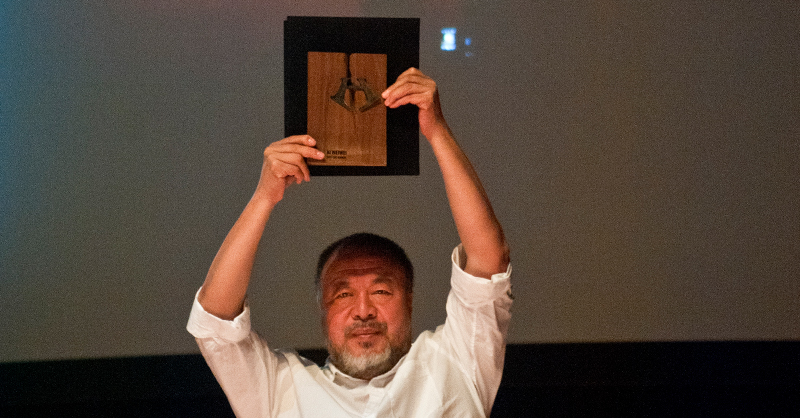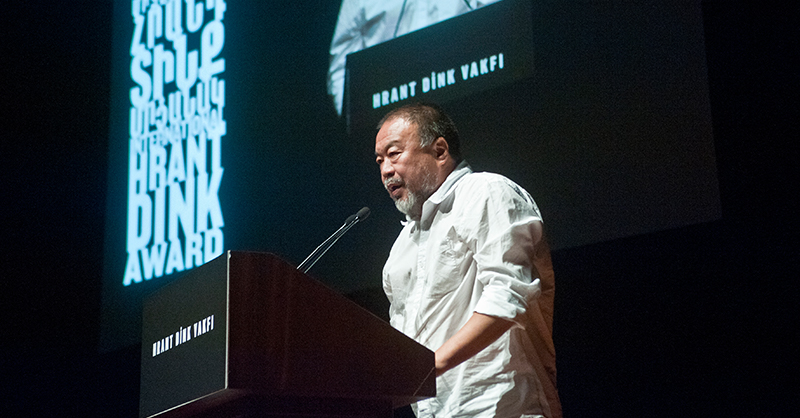
Ai Weiwei was born in Beijing in 1957. After the death of Mao Zedong and the end of the Cultural Revolution, he returned to Beijing with his family.
Ai studied animation at the Beijing Film Academy. In 1983, he went to New York, where he continued his arts education. He left school and made his living by painting portraits on the street and working at various other jobs. During this period, he became acquainted with the work of artists like Marcel Duchamp, Andy Warhol and Jasper Johns, and began working in the area of conceptual art.
In 1993, he returned to China. In 2008, ten days after the Szechuan Earthquake, he visited the region to examine and film the situation; and realized that the government was not providing factual information about the disaster unfolding there. Creating a ‘‘Citizens’ Investigation’’ web site, he released information on the faulty construction and sub-standard materials used in the government schools which had caused the death of countless people in the earthquake, shared stories of students who had perished, and published many articles about the earthquake during the investigation process. Because of these activities, the site was closed by the Chinese government. In 2010 a demolition order was issued for his newly built studio in Shanghai, where he wanted to teach architecture classes although he had built with the necessary official permits. He stated that the decision was due to the fact that he had “disappointed” the Shanghai Municipality with his documentaries on “sensitive” subjects. He was ordered to be placed under house arrest; although the order was rescinded the next day, it was followed by several attempts to prevent him from leaving the country. In April 2011, as he was preparing to travel to Hong Kong, he was apprehended at the airport. His studio was searched by the police, his materials and computer were confiscated, his co-workers were detained. He was held for three months. Despite strict government monitoring and limited freedom of travel until 2015, he continued criticizing social inequality through his art.
Since 2015, he has used his art installations on the subject of flight from the Middle East to Europe due to wars, to draw the world’s attention to refugees’ struggle to survive. He has addressed the refugee issue in many ways. In the autumn of 2015 with a photograph in which he posed as Alan Kurdi, the Syrian refugee child who washed up on the beach in Bodrum; in February 2016, by distributing blankets given to taken from refugees taken from the sea to Hollywood stars at a “Cinema for Peace” dinner held at the Berlin Film Festival; by placing life jackets on the columns of the Berlin Konzerthaus; and with his documentary titled ‘‘Human Flow’’.
Expressing his political and cultural criticism via contemporary art, photographs and films, he draws attention to inequality and human rights violations throughout the world. Although he suffers extreme oppression for his criticism of the government of his home country China concerning violations of democracy and human rights, he continues, undaunted, to hold a mirror to humanity and raise awareness.

I am very honoured to be part of this very important award ceremony and very honoured to receive the International Hrant Dink Award. This is a great honour to me. I am very much impressed by the Foundation for defending humanity, asking for truth and protecting our memory and holding the belief that humanity as a ‘one’. If anyone, in anywhere, at anytime a human condition is violated we all be hurt and this is why we have to defend every human rights in anywhere.
Thank you.
